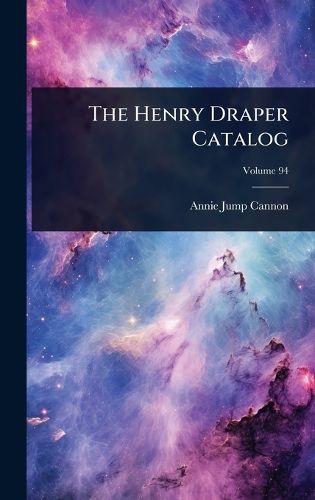Readings Newsletter
Become a Readings Member to make your shopping experience even easier.
Sign in or sign up for free!
You’re not far away from qualifying for FREE standard shipping within Australia
You’ve qualified for FREE standard shipping within Australia
The cart is loading…






This title is printed to order. This book may have been self-published. If so, we cannot guarantee the quality of the content. In the main most books will have gone through the editing process however some may not. We therefore suggest that you be aware of this before ordering this book. If in doubt check either the author or publisher’s details as we are unable to accept any returns unless they are faulty. Please contact us if you have any questions.
a??The Henry Draper Cataloga?? is a monumental work in the field of astronomy, representing a comprehensive compilation of stellar spectra. Primarily authored by Annie Jump Cannon, this catalog classifies hundreds of thousands of stars based on their spectral characteristics, providing a foundational resource for astronomers and astrophysicists. Volume 94 of this series, originally published in 1919, continues to be a valuable reference for understanding stellar evolution and the composition of the universe. The catalog's detailed spectral classifications enabled significant advancements in understanding the physical properties of stars, making it an enduring contribution to astronomical science. Its systematic approach and vast scope ensure its continued relevance in modern astrophysical research.
This work has been selected by scholars as being culturally important, and is part of the knowledge base of civilization as we know it. This work was reproduced from the original artifact, and remains as true to the original work as possible. Therefore, you will see the original copyright references, library stamps (as most of these works have been housed in our most important libraries around the world), and other notations in the work.
This work is in the public domain in the United States of America, and possibly other nations. Within the United States, you may freely copy and distribute this work, as no entity (individual or corporate) has a copyright on the body of the work.
As a reproduction of a historical artifact, this work may contain missing or blurred pages, poor pictures, errant marks, etc. Scholars believe, and we concur, that this work is important enough to be preserved, reproduced, and made generally available to the public. We appreciate your support of the preservation process, and thank you for being an important part of keeping this knowledge alive and relevant.
$9.00 standard shipping within Australia
FREE standard shipping within Australia for orders over $100.00
Express & International shipping calculated at checkout
This title is printed to order. This book may have been self-published. If so, we cannot guarantee the quality of the content. In the main most books will have gone through the editing process however some may not. We therefore suggest that you be aware of this before ordering this book. If in doubt check either the author or publisher’s details as we are unable to accept any returns unless they are faulty. Please contact us if you have any questions.
a??The Henry Draper Cataloga?? is a monumental work in the field of astronomy, representing a comprehensive compilation of stellar spectra. Primarily authored by Annie Jump Cannon, this catalog classifies hundreds of thousands of stars based on their spectral characteristics, providing a foundational resource for astronomers and astrophysicists. Volume 94 of this series, originally published in 1919, continues to be a valuable reference for understanding stellar evolution and the composition of the universe. The catalog's detailed spectral classifications enabled significant advancements in understanding the physical properties of stars, making it an enduring contribution to astronomical science. Its systematic approach and vast scope ensure its continued relevance in modern astrophysical research.
This work has been selected by scholars as being culturally important, and is part of the knowledge base of civilization as we know it. This work was reproduced from the original artifact, and remains as true to the original work as possible. Therefore, you will see the original copyright references, library stamps (as most of these works have been housed in our most important libraries around the world), and other notations in the work.
This work is in the public domain in the United States of America, and possibly other nations. Within the United States, you may freely copy and distribute this work, as no entity (individual or corporate) has a copyright on the body of the work.
As a reproduction of a historical artifact, this work may contain missing or blurred pages, poor pictures, errant marks, etc. Scholars believe, and we concur, that this work is important enough to be preserved, reproduced, and made generally available to the public. We appreciate your support of the preservation process, and thank you for being an important part of keeping this knowledge alive and relevant.